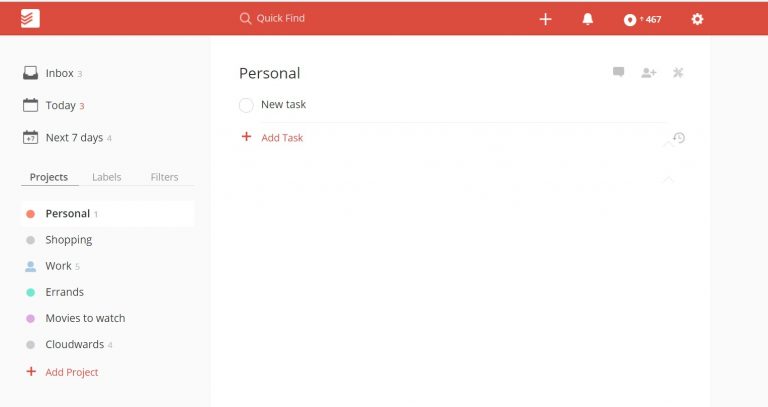
Now it is time to organise the items on the list in the right place. Delegate stuff you can’t complete to others.If an item on your list takes less than 2 minutes to execute, then do it right away!.Trash what you don’t need or what is not important.A good time to do this is at the end of the day so you can start the next morning with a fresh mind. On a regular basis (preferably at least once a day) you should process the collected tasks and ideas. CLARIFY: WHAT TO DO WITH WHAT YOU COLLECTED? You have to be sure that the place where you capture it, you will review it later.You have to be able to do it very quickly.You can make many more inboxes like post-its on the fridge, a whiteboard at work,… but there are 2 important aspects: The ‘inboxes’ can be multiple places like for example: – Third, once you’ve decided on all the actions you need to take, you must keep reminders of them organised in a system you review regularly. – Second, you must clarify exactly what your commitment is and decide what you have to do, if anything, to make progress toward fulfilling it. Anything you consider unfinished in any way must be captured in a trusted system outside your mind, or what I call a collection tool, that you know you’ll come back to regularly and sort through. – First of all, if it’s on your mind, your mind isn’t clear. “ Managing commitments well requires the implementation of some basic activities and behaviors”: That is why it is important to drop everything in your inbox to process it later. We always lean towards doing the ‘loudest’ and most recent task first, but this isn’t necessarily the right thing to do at that moment. Everything you think about, for example “I still need to call my boss”, you should have a system for where you can write it down in, called inbox, and where you know that you will see it later. The trick of working effectively is emptying your head. Or just simply start with the following steps explained in the blogpost! Discover the 5 steps to mastering the GTD workflow: 1. So I would, if you are not a big reader, start with reading the first 3 chapters and implementing those and you will be off to a good start. It basically meant to me making a second external brain, which I was in big need of… But, yes there is a small but, David Allen is a big salesperson and the useful part of the book could have been written in 10 pages. To sum up my own experience and give you a hint of what is coming: I loved reorganizing (or should I say organizing…) my life with the help of the Getting Things Done system, and it has seriously helped me when it comes down to procrastination and motivation.

Many people on the internet dedicate their life to this system as some kind of religion (this is exaggerated but kind of true), and I wanted to know if the hype was worth it or not, so I also jumped in with two feet, read the book and tried it hands on myself. One of the many systems that can be applied, and that I think is a good way to start, is the Getting Things Done ( ) system of David Allen. GETTING THINGS DONE: THE PRODUCTIVITY SYSTEM

In this case, then you might know the overwhelming feeling of all those projects running in your head, with procrastination as a result.

it might be that the system your team is using isn’t even enough for you… Maybe you are still a student or you are self-employed and you don’t have a system to fall on at all to manage all your tasks and projects. But what about your personal projects and goals? You want to learn more about investing, needing a fresh new working space at home, wanting to make photo books of trips you did years ago, or maybe even finally start that side business? If you work at a company, you probably use digital applications to process information and tasks all the time.


 0 kommentar(er)
0 kommentar(er)
